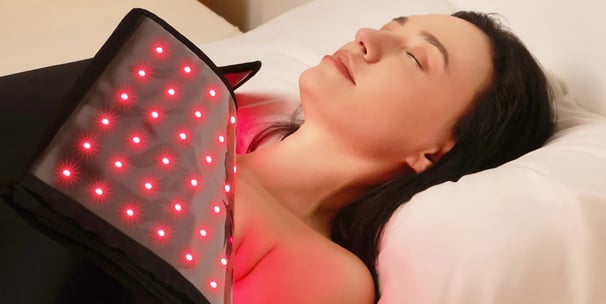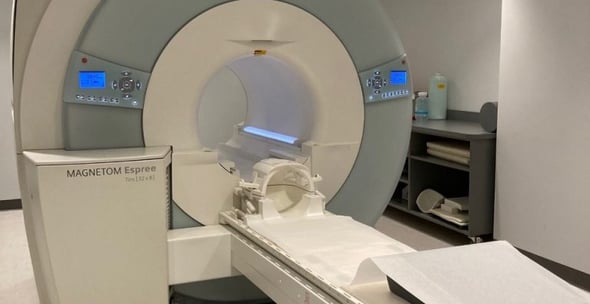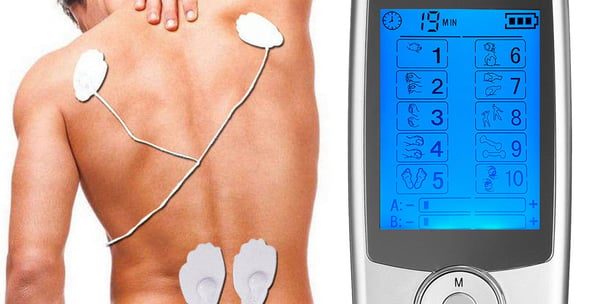Expert Care for Peripheral Neuropathy
810-225-2866
Healthy Nerves Neuropathy Center- Anthony Arena DC
Expert Care for Neuropathy Relief
At Healthy Nerves Neuropathy Center, we specialize in treating peripheral neuropathy with advanced therapies and over 30 years of experience, ensuring affordable and effective care tailored to your needs.
Your Health is Our Priority
Experience Matters in Treatment
Our comprehensive approach includes MRI evaluations, red light therapy, TENS units, mechanical massage, oxygen therapy, diet modifications, and chiropractic adjustments to promote healing and improve your quality of life.
Our Services
We provide comprehensive treatments for peripheral neuropathy with advanced techniques and personalized care.




OxygenTherapy-Benefits
Enhanced Oxygen Delivery to Tissues:
o Mechanism: Increased oxygen saturation during exercise may improve oxygen supply to damaged peripheral nerves, supporting cellular repair and regeneration.
o Impact: Potentially accelerates nerve healing and reduces oxidative stress, which contributes to nerve damage.
Improved Circulation:
o Mechanism: Exercise boosts blood flow, while supplemental oxygen may enhance nutrient and oxygen delivery to extremities.
o Impact: Addresses poor circulation, a common issue in neuropathy (e.g., diabetic neuropathy), promoting healthier nerve function.
Reduced Inflammation:
o Mechanism: Oxygen therapy may modulate inflammatory pathways, reducing inflammation around nerves.
o Impact: Alleviates neuropathic pain and swelling associated with nerve inflammation.
Pain and Symptom Relief:
o Mechanism: Improved nerve function and reduced inflammation may decrease pain signals.
o Impact: May lessen chronic pain, numbness, and tingling in hands/feet.
Mitochondrial Support:
o Mechanism: Enhanced oxygen availability can improve mitochondrial efficiency, boosting energy production in nerve cells.
o Impact: Supports cellular metabolism, potentially slowing neurodegeneration.
Neuroprotective Effects:
o Mechanism: By reducing oxidative stress and improving cellular resilience, EWOT may protect nerves from further damage.
o Impact: Could help stabilize or slow disease progression.
Complementary to Other Therapies:
Synergy: EWOT may enhance the effects of medications (e.g., gabapentin),




MRI-Benefits
Accurate Diagnosis:
Identifies structural causes of nerve damage (e.g., spinal cord compression, herniated discs, tumors, or nerve root impingement).
Helps differentiate between peripheral neuropathy and mimics (e.g., radiculopathy, spinal stenosis).
Early Detection of Underlying Conditions:
Reveals inflammation, demyelination (nerve sheath damage), or nerve thickening (e.g., in CIDP or amyloidosis).
Detects metabolic or autoimmune conditions (e.g., multiple sclerosis) affecting nerves.
Non-Invasive Imaging:
Provides detailed, high-resolution images of soft tissues, nerves, and spinal structures without radiation exposure.
Guides Treatment Planning:
Pinpoints exact locations of nerve compression or lesions, aiding surgical planning (e.g., decompression surgery).
Helps tailor therapies (e.g., corticosteroids for inflammation, physical therapy for structural issues).
Rules Out Serious Pathology:
Excludes tumors, cysts, or vascular abnormalities (e.g., aneurysms) that may mimic neuropathy symptoms.
Assesses Severity and Progression:
Monitors nerve damage over time to evaluate disease progression or treatment efficacy.
Reduces Diagnostic Uncertainty:
Complements nerve conduction studies (NCS) and electromyography (EMG) to confirm or refine diagnoses.
Identifies Reversible Causes:
Highlights treatable issues (e.g., nerve entrapment, spinal lesions) that may reverse neuropathy if treated properly
Patient Reassurance:
Provides visual confirmation of nerve health, reducing anxiety about unexplained symptoms.






Chiropractic-Benefits
Improved Nerve Function:
Spinal adjustments may reduce nerve compression caused by misalignments (subluxations), enhancing communication between the brain and peripheral nerves.
Addresses spinal issues (e.g., herniated discs, spinal stenosis) that contribute to nerve irritation or damage.
Pain Relief:
Alleviates neuropathic pain (burning, tingling, numbness) by reducing pressure on affected nerves.
May decrease reliance on pain medications through natural, non-invasive interventions.
Enhanced Blood Circulation:
Adjustments and soft tissue therapies (e.g., massage, stretching) can improve blood flow to extremities, promoting oxygen/nutrient delivery to damaged nerves.
Reduced Inflammation:
Chiropractic care may lower inflammatory markers around nerves and joints, easing neuropathic symptoms.
Improved Mobility and Balance:
Corrects musculoskeletal imbalances that worsen neuropathy-related weakness or gait issues.
Strengthens stabilizing muscles to prevent falls, common in those with sensory deficits.
Holistic Support:
Integrates lifestyle advice (e.g., exercise, nutrition, posture correction) to address contributing factors like diabetes or poor circulation.
Complementary to Other Therapies:
Works alongside medications, physical therapy, or acupuncture for a multi-modal approach to symptom management.
Non-Invasive and Drug-Free:
Avoids risks associated with surgery or pharmaceuticals, making it a safer option for some patients.


Pain Relief:
Disrupts pain signals by stimulating sensory nerves, reducing the perception of neuropathic pain (burning, tingling, or numbness).
Triggers the release of endorphins, the body’s natural pain-relieving chemicals.
Non-Invasive and Drug-Free:
Avoids risks associated with medications (e.g., side effects, dependency) or invasive procedures.
Safe for most patients when used correctly.
Improved Circulation:
Electrical stimulation may enhance blood flow to affected areas, supporting nerve repair and reducing inflammation.
Customizable Therapy:
Adjustable intensity, frequency, and pulse settings allow personalized treatment based on symptom severity.
Portable and Convenient:
Enables at-home or on-the-go pain management with minimal setup.
Reduced Reliance on Medications:
Can complement or reduce the need for painkillers (e.g., gabapentin, opioids) in some cases.
Enhanced Mobility:
By alleviating pain, may improve movement and daily functioning in hands, feet, or other affected areas.
Cost-Effective:
Lower long-term costs compared to frequent medical visits or prescription refills.
Minimal Side Effects:
Generally well-tolerated, with rare adverse effects (e.g., skin irritation at electrode sites).
Psychological Benefits:
Empowers patients by providing active control over pain management.
Identifies Underlying Causes:
Pinpoints treatable conditions (e.g., diabetes, vitamin B12 deficiency, thyroid dysfunction, autoimmune diseases) contributing to nerve damage.
Detects infections (e.g., Lyme disease, HIV) or toxins (e.g., heavy metals, chemotherapy) linked to neuropathy.
Guides Targeted Treatment:
Results inform personalized therapies (e.g., insulin for diabetic neuropathy, B12 injections for deficiency, immunosuppressants for autoimmune causes).
Helps avoid ineffective or unnecessary treatments by addressing root issues.
Monitors Disease Progression:
Tracks biomarkers (e.g., HbA1c for diabetes, inflammatory markers) to assess treatment efficacy and nerve health over time.
Reveals Nutritional Deficiencies:
Identifies deficiencies in vitamins (B1, B6, B12, D, E) or minerals (magnesium, copper) critical for nerve function.
Enables correction through diet or supplements to support nerve repair.
Rules Out Serious Conditions:
Screens for malignancies (e.g., myeloma, lymphoma), kidney/liver disease, or genetic disorders (e.g., Charcot-Marie-Tooth disease) mimicking neuropathy.
Optimizes Medication Management:
Detects drug-induced neuropathy (e.g., from chemotherapy, antiretrovirals) to adjust prescriptions.
Monitors drug levels (e.g., metformin-associated B12 deficiency) to prevent complications.
Supports Early Intervention:
Early diagnosis of reversible causes (e.g., celiac disease, alcohol abuse) may halt or reverse nerve damage.
Reduces Diagnostic Uncertainty:
Differentiates peripheral neuropathy from mimics (e.g., radiculopathy, myopathy) through blood, urine, or CSF analysis.
Informs Lifestyle Adjustments:
Identifies metabolic imbalances (e.g., high blood sugar, elevated homocysteine) to guide dietary, exercise, or alcohol-modification plans.
Key Lab Tests for Peripheral Neuropathy:
Blood Tests: Glucose/HbA1c, B12/folate, thyroid panel, ANA (autoimmune), HIV/Lyme serology, heavy metals.
Urine Tests: Protein electrophoresis (multiple myeloma), toxicology.
Genetic Testing: For hereditary neuropathies (e.g., CMT).
Lab Testing - Benefits
Addresses Nutritional Deficiencies:
Corrects deficiencies in key nutrients (e.g., B vitamins, vitamin D, magnesium) that contribute to nerve damage.
Example: B12 supplementation can reverse neuropathy caused by deficiency.
Supports Nerve Repair and Regeneration:
Promotes myelin sheath repair (e.g., omega-3 fatty acids, alpha-lipoic acid) and nerve cell health.
Enhances mitochondrial function (e.g., acetyl-L-carnitine) to boost energy production in nerves.
Reduces Oxidative Stress and Inflammation:
Antioxidants like alpha-lipoic acid and vitamin E neutralize free radicals, protecting nerves from oxidative damage.
Omega-3s (EPA/DHA) lower inflammation linked to nerve irritation and pain.
Improves Nerve Function and Symptom Relief:
Alleviates pain, numbness, and tingling (e.g., B1/B6/B12, alpha-lipoic acid).
Enhances nerve signal transmission (e.g., magnesium supports proper nerve-muscle communication).
Slows Disease Progression:
May delay worsening of neuropathy in conditions like diabetes (e.g., alpha-lipoic acid improves glucose metabolism and nerve conduction).
Non-Invasive and Adjunctive:
Complements medications (e.g., gabapentin) and lifestyle changes (e.g., diet, exercise) without invasive procedures.
Personalized Treatment:
Targets specific deficiencies or causes (e.g., vitamin D for autoimmune-related neuropathy, folate for homocysteine reduction).
Enhances Quality of Life:
Improves sleep, mobility, and daily function by reducing neuropathic symptoms
Targeted Supplements - Benefits
Addresses Nutritional Deficiencies:
Corrects deficiencies in key nutrients (e.g., B vitamins, vitamin D, magnesium) that contribute to nerve damage.
Example: B12 supplementation can reverse neuropathy caused by deficiency.
Supports Nerve Repair and Regeneration:
Promotes myelin sheath repair (e.g., omega-3 fatty acids, alpha-lipoic acid) and nerve cell health.
Enhances mitochondrial function (e.g., acetyl-L-carnitine) to boost energy production in nerves.
Reduces Oxidative Stress and Inflammation:
Antioxidants like alpha-lipoic acid and vitamin E neutralize free radicals, protecting nerves from oxidative damage.
Omega-3s (EPA/DHA) lower inflammation linked to nerve irritation and pain.
Improves Nerve Function and Symptom Relief:
Alleviates pain, numbness, and tingling (e.g., B1/B6/B12, alpha-lipoic acid).
Enhances nerve signal transmission (e.g., magnesium supports proper nerve-muscle communication).
Slows Disease Progression:
May delay worsening of neuropathy in conditions like diabetes (e.g., alpha-lipoic acid improves glucose metabolism and nerve conduction).
Non-Invasive and Adjunctive:
Complements medications (e.g., gabapentin) and lifestyle changes (e.g., diet, exercise) without invasive procedures.
Personalized Treatment:
Targets specific deficiencies or causes (e.g., vitamin D for autoimmune-related neuropathy, folate for homocysteine reduction).
Enhances Quality of Life:
Improves sleep, mobility, and daily function by reducing neuropathic symptoms
Diet Optimization - Benefits
Red Light - Benefits
`Pain Relief:
o Stimulates cellular repair and reduces inflammation, alleviating neuropathic pain.
o Modulates pain signals by influencing nerve cell activity and reducing sensitization.
· Improved Nerve Function:
o Enhances mitochondrial function in nerve cells, boosting energy (ATP) production for nerve repair.
o Supports myelin sheath regeneration, improving nerve signal transmission.
· Reduced Inflammation:
o Lowers pro-inflammatory cytokines (e.g., TNF-α, IL-6) that contribute to nerve damage.
o Promotes anti-inflammatory responses, easing swelling and irritation around nerves.
· Enhanced Blood Circulation:
o Increases nitric oxide production, improving blood flow to extremities (critical for oxygen/nutrient delivery to damaged nerves).
o Encourages angiogenesis (new blood vessel formation) in affected areas.
· Accelerated Nerve Regeneration:
o Activates growth factors (e.g., NGF, BDNF) that promote nerve fiber repair and regrowth.
o Shown in studies to improve nerve conduction velocity and sensory recovery.
· Antioxidant Effects:
o Reduces oxidative stress by neutralizing free radicals, protecting nerves from further damage.
o Strengthens cellular defenses against metabolic and toxin-induced nerve injury.
· Non-Invasive and Safe:
o No medications or surgery required, minimizing side effects.
o Well-tolerated with minimal risk when used at appropriate wavelengths (e.g., 600–850 nm).
· Symptom Reduction:
o Decreases numbness, tingling, and burning sensations through improved nerve health.
o Restores tactile sensitivity and motor function in hands/feet.
· Complementary to Other Therapies:
o Works synergistically with medications (e.g., gabapentin), physical therapy, or lifestyle changes (e.g., glycemic control in diabetes).
Tens Unit - Benefits
Customer Reviews
See what our clients say about their experiences with us.
The treatments at Healthy Nerves have transformed my life. Highly recommend!
Bill Roe Jr.
After struggling with neuropathy for years, I finally found relief here. The staff is knowledgeable and caring, and the therapies really work. Thank you for everything!
Judy Gragg
★★★★★
★★★★★
Neuropathy Solutions








